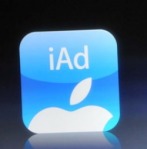The inimitable Terence Kawaja tweeted many months back – ‘We need an Operating System for Advertising‘. I believe this is true – but we need to go further – what we need is an iOS of Advertising.

This post isn't really about iAd.
But first, let’s talk about the OS. From a capability perspective, the various media channels have started opening APIs methodically. Old ones have added APIs, and new ones are starting off building APIs even before they’ve built UIs (see: Twitter), and this is a good sign indeed.
A platform layer could be built that takes these APIs, as well as APIs from other components of the ecosystem (like the data providers), and provide a generalized, unifying platform, an Operating System, if you will, on which Ad Applications can be written.
The Geek in me loves this! It would be so awesome.
Typically, when the Geek in me loves something greatly, it’s a sure sign that the Non-Geek in me will not. Greatly.
I believe we should not be solving the problem of bringing disparate marketing channels, data providers and ecosystems into one seamless whole for someone to optimize over.
Instead, we should start from scratch, and sit down with our clients – the marketers. Read the classic Advertising tomes. What are they trying to achieve? How do they go about analyzing their market segments, their potential customers, to get insights on how to sell to them? What have their instincts taught them in the years of working with end-customers and businesses?
In other words, we need to insert a little bit of iOS into our thinking. What’s the marketing problem we’re trying to solve? Is it important that it require Hadoop? Or Machine Learning? Does it really matter that the bidding is Real-Time? Or that APIs need to exist?
Or what we really need is drastically simpler, user-friendly tools for marketers to think in human terms, manage marketing in non-technical ways, get insights that are human-readable and actionable by humans.
Steve Jobs’ magic is in making technology Human. The iPad works because it’s Human, not because it’s High-Tech.
The (still-fledgling) Ad Tech industry hasn’t yet learned this lesson, I’m afraid.
I’m wishing for an iOS for Ad Tech, not the OS.
Amit
 We founded Lexity two years ago to build a different kind of an advertising/marketing company. While we’ve iterated our product, tried different pricing models, and watched experiments become full-fledged products in their own right – the core principles underlying Lexity haven’t changed.
We founded Lexity two years ago to build a different kind of an advertising/marketing company. While we’ve iterated our product, tried different pricing models, and watched experiments become full-fledged products in their own right – the core principles underlying Lexity haven’t changed.




